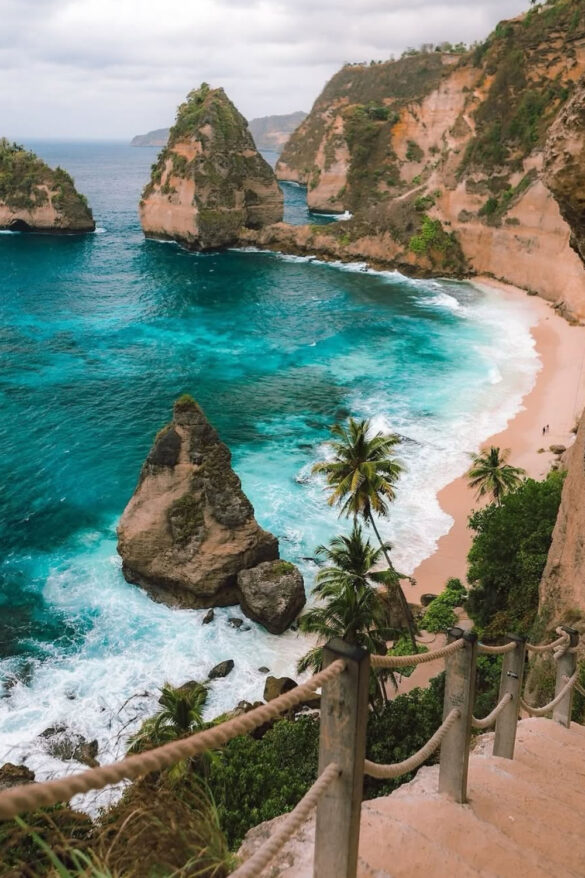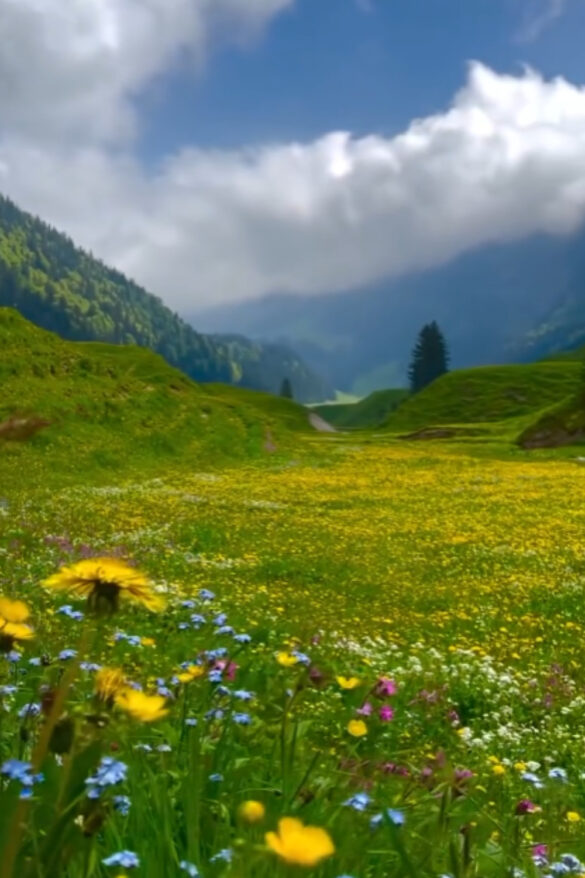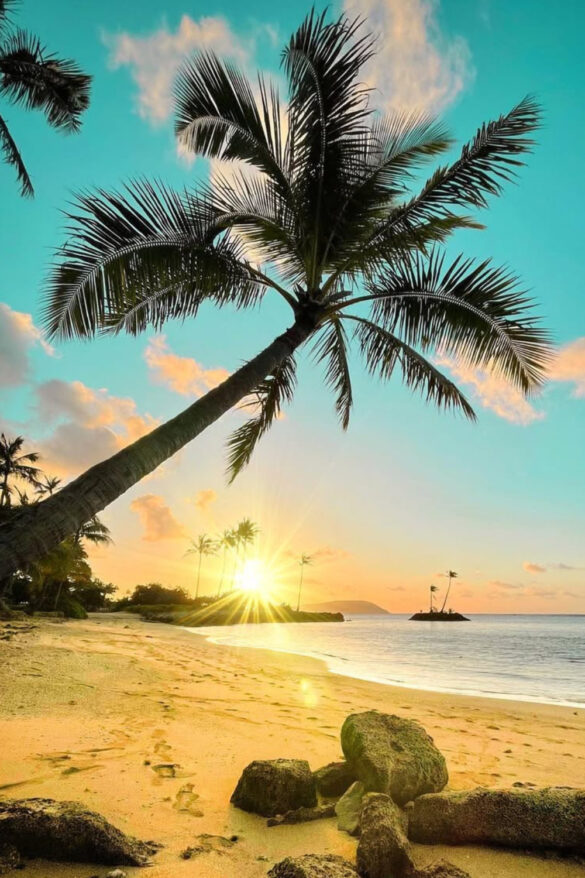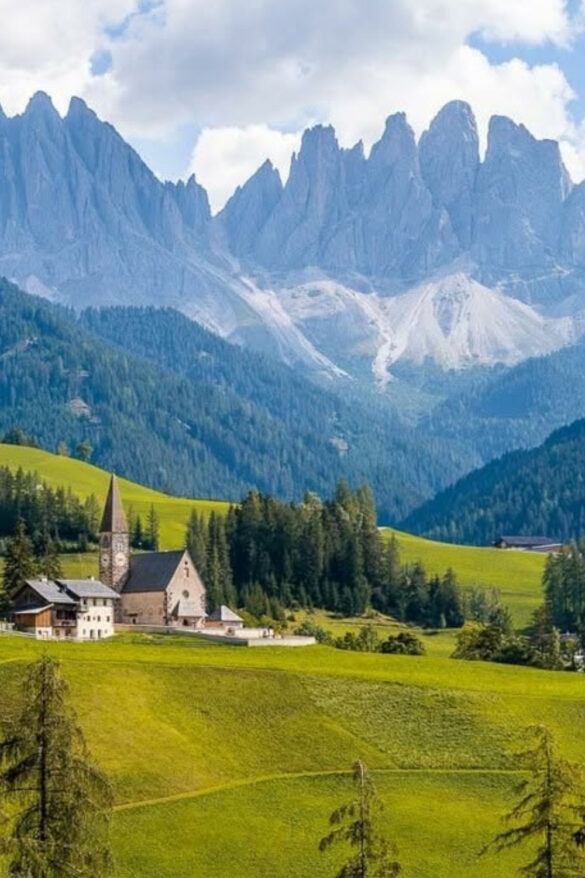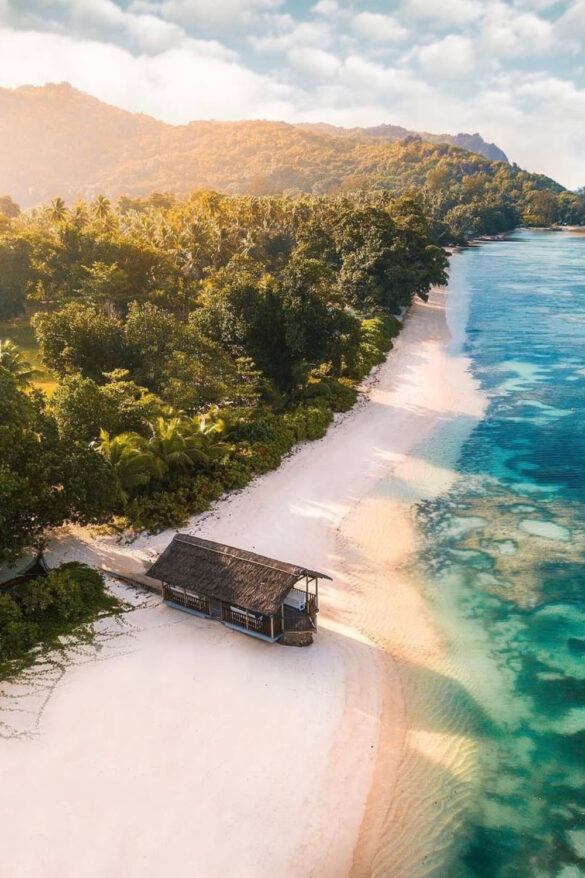Introduction: Embarking on Your South American Backpacking Journey
South America. The name itself gives you the pictures of ancient ruins, looming mountains, colorful cultures, and wild and untamed nature. The thought of passing through this gorgeous continent can be thrilling and overwhelming to many first-time backpackers. But fear not! This beginner backpacking guide in South America aims to demystify the experience and bring you the knowledge and practical tools you need to help you turn your dream trip into a real one. Whether you want to travel across crowded cities or walk through jungles as well as across mountains, South America is the best place to get to know the most diverse experience possible as a traveler. It will be used as a guide to help you plan an unforgettable trip, that will see you enjoy every moment in this highly diverse and fascinating part of the world. You are ready to fill your bags and go on the adventure of a lifetime! – A First-Timer’s Guide to Backpacking Through South America
Why should you start your first back packing trip in South America?
There are many reasons why South America is the best destination that first-time backpackers should visit, and they are all combined with affordability, unbelievable diversity and friendly hospitality.
- Cost-Effectiveness: In a vast majority of South American countries your money goes much farther than it would in Europe or North America. This comes with the advantage of making longer journeys, doing more and getting a deeper experience with the local cultures without necessarily emptying the wallet. It is also a great option to go to because accommodations, food, and local transportation are usually very affordable.
- Unsurpassed Variety: Snow-capped Andes mountains, the sinuous Amazon rainforest, the stark reality of the Atacama Desert, and the white sand and beaches of the Caribbean coast, South America is a land of unbelievable landscapes. This allows you to see more than one ecosystem and environment on one trip, providing you with an ever-changing backdrop to your adventure.
- A Dynamic Cultural Melting Pot: the continent is a mixture of local culture, colonialism and dynamism. You may see old Inca tombs, salsa dance in Colombia, study gaucho life in Argentina or watch the sophisticated art of an Argentinean marketplace. Every nation, and most jurisdictions, has its own cultural mosaic, ready to unravel.
- Adventure at Every Level: South America is the place where an adrenaline-seeking traveler wants to paraglide over Medellin, a nature-lover wants to see sloths in the Amazon, or a history lover wants to explore Machu Picchu. It has established backpacker tracks which provide the feeling of community, and the chance of exploring off-the-beaten-path to those who wish to be left alone.
- Friendly and Warm Natives: The South Americans are known to be very hospitable and friendly. Language can also become an obstacle, but even simple Spanish or Portuguese will assist in learning about the local life, and actually reaching meaningful interactions, with some effort. Numerous tourists describe a feeling of being totally secure and a sense of being taken care of by the local people they visit.
All this adds up to a unique experience that is both exciting and enlightening, one that will leave you feeling confident and with memorable moments as you follow your first-timers backpacking manual in South America.
What to Expect: Backpacking the REAL South America.
Backpacking is an extremely fulfilling experience, but it also has its share of realities and challenges that need to be taken into account by first-timers when traveling to South America. Perhaps you will be better equipped knowing them ready to avoid certain frustrations and make the journey a little easier and enjoyable.
- Pace of Life: Be ready to live at a slower relaxed pace of life commonly known as mañana culture. Buses may be late, services may be slower than the schedule says, and schedules may be flexible. Living with this carefree attitude instead of struggling with it will greatly eliminate stress. Having patience is indeed a virtue in this case.
- Infrastructure disparity: Big cities are generally well-developed, but as soon as you get out of the city centres, you can be faced with not-so-good roads, less impressive housing and slower internet connection. Get into it as part of the real thing. Given that comfort may be inconsistent, transportation, especially long distance buses, can be considered very good and extremely cheap.
- Language barrier: Spanish is common in most of South America and Portuguese is Brazil official language. Although most residents of tourist destinations are somewhat fluent in English, particularly younger people, having knowledge of some phrases in the native language will significantly improve your experience. It may help to order food, negotiate prices and routes and get to know other people who live here well. Think about getting a downloadable translator program.
- Safety and security: South America, just like any other part of the world, has got its safety issues. It is also a typical issue in crowded tourist spots and on buses and trains where petty crime like pick pocketing and bag snatching is very common. Nevertheless, criminal violence directed at tourists is not that grave. The trick is to be street smart: do not carry around valuables, do not walk alone at night in dark places, find out what neighborhoods are safe, and be aware of your environment. Trust your gut feeling.
- Altitude Sickness: You will certainly feel the high altitude in case your itinerary incorporates locations in the Andes (such as Peru, Bolivia, Ecuador, some parts of Chile and Argentina). Altitude sickness may have mild symptoms such as headache and tiredness, or more serious complications. Slow acclimatization is important, hydration is essential and active work should be avoided during the initial days of high altitude. Traditional remedy which is usually helpful is coca tea or leaves.
- Cultural Differences: Be welcoming and accepting of other practices and social behaviours. As an example, the distance between people can be smaller than you are accustomed to and eye contact may be interpreted in other ways. It would be extremely helpful to research about local etiquette in every country you will visit.
When you have the right expectations, and when you are willing to do so, you will find that your first-time guide on a backpacking trip will provide you with an experience that is both very full and very real, and you will be able to absorb the very rich spirit of the continent of South America.

Planning Your Backpacking Adventure
A successful backpacking trip is built on a foundation of solid planning. While the allure of spontaneity is strong, a little preparation goes a long way in ensuring a safe, smooth, and enjoyable experience. This section will guide you through the crucial steps of planning your first-timer’s guide to backpacking through South America, from logistics to practical considerations.
A. Essential Pre-Trip Planning and Logistics
Before you even think about packing your bag, you need to lay the groundwork for your journey. This involves several key steps that will define the shape and scope of your trip.
1. Visa and Entry Requirements
Navigating visa and entry requirements is one of the most important steps in your preparation. The rules vary significantly from country to country and depend on your nationality.
- Research is Paramount: Do not assume you can enter every country visa-free. While many nationalities (e.g., US, Canadian, Australian, UK, and most EU citizens) can enter countries like Peru, Colombia, and Argentina for up to 90 days without a visa, others, such as Brazil, may have specific requirements or fees. For example, Brazil has a history of requiring e-visas for citizens of the US, Canada, and Australia, so it’s essential to check the most up-to-date information well in advance of your trip. Some countries, like Bolivia, may require visas on arrival for certain nationalities, often with a fee and a list of required documents.
- Passport Validity: Ensure your passport is valid for at least six months beyond your planned departure date from South America. This is a standard requirement for entry into most countries globally.
- Onward Travel: Some countries may require proof of onward travel (a flight or bus ticket leaving the country) upon arrival. While this isn’t always checked, it’s wise to have a printout or digital copy of a bus or flight reservation just in case.
- Yellow Fever Vaccination: If your itinerary includes traveling to certain parts of the Amazon rainforest or other jungle regions, a Yellow Fever vaccination certificate may be mandatory for entry. Check the specific requirements for each country you plan to visit, as this can be a strict entry condition.
Case Study: Visa Confusion in Bolivia
A common point of confusion for backpackers is entering Bolivia. Many travelers from certain countries, like the United States, need a visa. Backpacker “Sarah” from Boston planned a spontaneous trip across the continent. She assumed she could enter Bolivia without a visa, but upon arriving at the border, she was denied entry. She had to backtrack to a major city to obtain a visa from a consulate, losing valuable time and money. This anecdote highlights the critical need for thorough visa research. Always check the official government websites of the countries you plan to visit or use reliable resources like the IATA Travel Centre.
2. Crafting Your Route and Itinerary
Choosing a backpacking route through South America can be overwhelming given the continent’s size. The best approach is to consider your interests, budget, and the time you have.
- The Classic “Gringo Trail”: For first-timers, the “Gringo Trail” is a fantastic starting point. This well-trodden path typically links countries like Peru, Bolivia, and Chile, or Colombia, Ecuador, and Peru. It’s popular for a reason—it’s safe, has well-established tourist infrastructure, and connects some of the continent’s most famous highlights, such as Machu Picchu, the Salar de Uyuni, and the Galapagos Islands. Following this route makes it easy to meet other travelers and find reliable transportation.
- North to South vs. South to North: There are two main directions for a long-term trip: starting in the north (e.g., Colombia) and moving south, or vice versa. The direction often depends on the season you are traveling and the specific activities you want to do. For instance, if you want to visit Patagonia’s summer season (December-February), starting in the south might make more sense.
- Slow Travel is Key: A common mistake is trying to cram too much into one trip. South American distances are vast, and bus journeys can take 12-24 hours. A good rule of thumb for a one-month trip is to focus on just one or two countries in depth rather than a whirlwind tour of five.
Example Itinerary for a First-Timer’s Backpacking Through South America (3-Month Trip)
This sample itinerary is a great starting point for those with more time to dedicate to their adventure, offering a balance of culture, nature, and adventure.
| Country | Estimated Time | Highlights |
| Colombia | 3-4 weeks | Bogotá, Medellín, Cartagena, Cocora Valley |
| Ecuador | 2-3 weeks | Quito, Baños, Quilotoa Loop, The Galapagos (budget permitting) |
| Peru | 4-5 weeks | Lima, Cusco, Machu Picchu, Amazon Rainforest, Colca Canyon |
| Bolivia | 2 weeks | La Paz, Death Road, Salar de Uyuni |
| Chile | 2-3 weeks | San Pedro de Atacama, Patagonia (Torres del Paine) |
| Argentina | 3-4 weeks | Buenos Aires, Mendoza, Patagonia (El Calafate, El Chaltén) |
Note: This is a general guide. Flexibility is crucial for any backpacking trip.
3. Best Time to Visit and Climate Considerations
The climate in South America is as varied as its sceneries, and what is considered the best time to go there is highly relative depending on the location.
- Andes Mountains: May-October in the high altitudes of Peru, Bolivia, and Ecuador are the best months to go trekking because the weather is clear and the trails are not as muddy. But it is also prime time and prices are higher and crowds are larger. November to April is the rainy season with fewer tourists and reduced prices, but also afternoons downpours.
- Patagonia: Patagonia in Chile and Argentina should be visited during the summer months (December to February), when it is the best season to explore the place. The weather is more predictable and all the hiking trails and facilities are available. But the winds are fierce and it is the priciest and busiest period to visit.
- The Amazon: Dry season (approximately June to October) is the best place to visit in order to see wildlife because animals are concentrated around a small number of water sources. But the wet season can be as rewarding, and greater water means canoe expeditions into the flooded forest.
- Brazil: Brazilian summer (December to February): Brazilian summer (December to February) is hot, humid and a beach heaven but it comes at a price; expensive in the season and crowded. The shoulder seasons (March-May and September-November) are pleasant and there are fewer tourists.
Fact: The South hemisphere seasons are the reverse of the north hemisphere. This is something to keep in mind during your visit to places such as Argentina and Chile.
B. What to Pack Your First-Timer Guide to Backpacking South America.
South American packing is a delicate affair between carrying options that suit each climate and not carrying too much weight. The trick is to travel light and intelligent with an emphasis on multi-purpose goods.
1. Fashion/ Clothing: Keep It Under wraps.
A layering system is non-negotiable considering how climate drastically changes between the humid temperatures of the Amazon and the chilly nights in the Andes.
Base Layers Fill moisture-wicking synthetic or merino wool t-shirts, long sleeve t-shirts. They dry fast, they do not smell, and they can withstand a broad temperature spectrum.
Mid Layers: a fleece jacket or a lightweight down jacket will be needed on cold nights, high elevations and buses with air conditioning.
- Outer Layers: It is essential to have a fine quality waterproof and windproof jacket. It will keep you dry when it rains in the forest, when it blows in Patagonia, when the rainfall happens unexpectedly in the cities. Two quick-dry trekking trousers which can be changed into shorts are also a very versatile item.
• Shoes: What you put on your feet will either kill or make a trip.
- Hiking Boots: Once you decide to take a multi-day trek, such as the Inca Trail, or a hike in Patagonia, you will need a pair of well-worn, water-resistant hiking boots.
- Comfortable Sneakers: The best shoes to walk around the city and have the occasional day hikes are a pair of sturdy and comfortable walking shoes or sneakers.
- Sandals/Flip-Flops: hostels/beaches/hot weather.
- Other Clothing: If you have a variety of clothes that are easy-to-clean, such as leggings, a pair of jeans, and perhaps one or two more dressy outfits to wear out in cities. Not to be left out are swimwear, a sun hat and a lightweight scarf that can also serve as a towel, head covering or blanket during a long bus journey.
- Headlamp:
- This is completely essential when walking in dark streets, hostel rooms, or hiking in the early morning.
- The Right Backpack: Your backpack is your second home on the road, and you should choose what to carry. A first-time backpacker would be best equipped with a pack in the 40-60 liter range. Finds such things as a locking zipper or rain cover, and an additional compartment to fit a sleeping bag or dirty laundry. It is much easier to access the items in your pack because it comes in a front-loading pack that opens in the form of a suitcase, and you do not need to unpack everything in the pack.
Daypack: A small packable daypack is essential during day trips, visits to the market, or short hikes.
• Safety and Security:
- Money Belt: A money belt is a discreet belt that goes under your clothes that offers maximum protection in carrying your passport, credit cards and some of your cash.
- Padlocks: Padlocks to lock your backpack zippers and lockers in the hostels.
• Health and Hygiene:
- Filtered Water Bottle: It is possibly the most desirable investment that you can make. It not only saves you money on bottled water, but also plastic waste.
- Basic First-Aid Kit: This should include basic things such as pain relievers, band-aids, antiseptic wipes, anti-diarrhea medicine and personal prescriptions.
- Sunscreen and Insect Repellant: Both of them are a must particularly at high altitude and in the jungle.
• Electronics:
- Universal Adapter: There is a wide range of outlet types in use in South America, so a universal adapter is essential.
- Power Bank: To charge your phone everywhere, particularly when you are on a long bus ride.
C. Health and Safety: The Keep and Sound.
o Offline Maps: Before you go, download some offline maps (e.g. Maps.me) and a translation application (e.g. Google Translate).
• Taxi and Ride-Sharing: In major cities, there are registered, licensed cabs, or you can use a ride-hailing application, such as Uber or Cabify.
Although South America is considered to be a safe location to visit, it is important to be prepared and exercise caution in case of a smooth ride.
1. Navigating Safely
- Be Street Smart: This is the cardinal rule. Stride with a purpose, walk with a purpose. Do not flash costly jewellery or electronics. Use the phone in a discreet way and store it in your pocket in cities.
- Research Neighborhoods: You are going to a hostel or you are strolling into a new neighborhood and you want to know the safe areas or neighborhoods to stay out of, so enquire or read online forums that provide this information before you get into that new neighborhood.
- Travelling safety and health insurance. Do not take random taxis on the street and particularly at night.
- Public Transportation: Your daypack should be placed on your lap (not in the overhead rack or in the floor) on buses. Lock your main backpack using a small lock when it is kept in a luggage compartment of the bus.
2. Solo Female Traveler Tips
Although the South America region is not unfamiliar with solo female traveling, there are certain measures to take into account.
- You Have To Be Confident: Pretend you have no idea what you are doing, when you really do not.
- Trust Your Gut: When a situation or an individual leaves you feeling insecure, get out of that situation.
- Connect with the fellow travellers: It is easy to meet other travellers in well rated hostels and it can be an excellent way of getting people to go on a trip with or even go out with.
- Dress the part: Although most cities are highly modern, in some rural or conservative cities, dressing decently will make you fit in and they won’t notice you.
3. The two companies that many backpackers consider because of their flexibility and coverage are World Nomads and SafetyWing.
- Comprehensive Travel Insurance: It is not negotiable. They should be included in your insurance policy as emergency medical, medical evacuation, trip cancellation and theft / loss of belongings.
- Altitude Acclimatization: When planning to travel to high altitude places, take it easy during the initial days.
- Vaccinations: Meet with a travel doctor long before you go on vacation and discuss necessary vaccinations. Some places mandate a Yellow Fever vaccination and extra vaccines such as Hepatitis A and Typhoid are strongly suggested.
Data Snapshot: Top Countries for Backpacking in South America (Based on Traveler Popularity & Affordability)
| Country | Average Daily Budget (USD) | Popularity Rank | Safety Ranking (Index) |
| Bolivia | $20 – $35 | 4 | Moderate |
| Peru | $25 – $45 | 1 | Moderate |
| Colombia | $30 – $50 | 2 | High |
| Ecuador | $25 – $40 | 3 | High |
| Argentina | $40 – $60+ | 5 | Moderate |
Data compiled from various traveler surveys and cost-of-living indices, as of late 2024. These figures are estimates and can vary widely depending on travel style and location.
This section of our first-timer’s guide to backpacking through South America should provide you with a solid foundation for your journey, allowing you to focus on the incredible experiences that lie ahead. The next section will dive into the heart of the matter: what to do once you’re there.

The Backpacking Experience: Your Journey on the Ground
Now that you’ve laid the groundwork for your trip, it’s time to dive into the practical realities of life on the road. This section of the first-timer’s guide to backpacking through South America will help you navigate the day-to-day logistics, from finding a place to sleep to meeting new people and managing your money.
A. Accommodation and Social Life: Finding Your Community
Choosing where to stay is about more than just a place to sleep; it’s about finding a community, sharing experiences, and meeting like-minded travelers.
- Hostels: The quintessential backpacker accommodation. Hostels offer an incredible way to meet people and find travel companions. They range from basic dorm rooms to more luxurious “boutique” options with private rooms. Look for hostels with social common areas, organized activities (like walking tours or pub crawls), and shared kitchens, which can save you a lot of money on food. Sites like Hostelworld and Booking.com are your best friends for finding and booking these.
- Homestays and Guesthouses: For a more authentic cultural experience, consider a homestay (known as casa particular in Cuba but available in other countries as well) or a family-run guesthouse (hospedaje). This gives you a chance to practice your language skills and get a glimpse into local life.
- Couchsurfing: If you’re on a tight budget and looking for a truly local experience, Couchsurfing can be a great option. It connects you with hosts who offer a place to stay for free. While the primary goal is cultural exchange, it’s a fantastic way to save money and get insider tips. Always check a host’s reviews and references thoroughly.
B. Transportation: Getting from A to B
Getting around South America is an adventure in itself, often involving long but scenic journeys.
- Long-Distance Buses: Buses are the lifeblood of South American travel. They are cheap, reliable, and run frequently between all major cities and tourist hubs.
- Types of Buses: Look for “cama” (bed) or “semi-cama” (semi-bed) buses for long overnight journeys. They offer reclining seats, and sometimes even meals and blankets, for a more comfortable ride.
- Bus Companies: The quality of buses varies by country and company. In Argentina and Chile, bus travel is very comfortable and often feels like flying first class. In Bolivia and Peru, it can be a bit more rugged. Always book tickets at the bus terminal or through a reputable travel agent.
- Internal Flights: For covering vast distances, internal flights can be a good option, especially if you’re short on time. Budget airlines like LATAM, Avianca, and Azul offer competitive prices, but be sure to book well in advance for the best deals.
- Shared Taxis and Vans (Colectivos): In many areas, especially for shorter routes, shared taxis or small vans are a common and quick way to get around. They leave when full and can be found at bus terminals or designated stands.
Table: Average Cost of Key Items in South America (in USD)
| Item | Colombia | Peru | Bolivia | Argentina |
| Hostel Dorm Bed | $10 – $15 | $10 – $20 | $5 – $10 | $15 – $25 |
| Local Meal (Lunch) | $3 – $5 | $3 – $5 | $2 – $4 | $5 – $8 |
| Bottle of Water | $0.50 – $1 | $0.50 – $1 | $0.50 – $1 | $1 – $1.50 |
| Local Bus Ride | $0.75 | $0.50 | $0.30 | $0.70 |
These are approximate values and can fluctuate based on location and exchange rates.
D. Food and Drink: A Culinary Adventure
South American cuisine is a vibrant and delicious part of the travel experience.
- Local Markets: The best place to find cheap, fresh, and authentic food. Try local specialties like arepas in Colombia, ceviche in Peru, or a juicy steak in Argentina.
- Street Food: Don’t be afraid to try street food from popular stalls with a high turnover of customers. It’s often the most delicious and budget-friendly option.
- Stay Hydrated: Always drink bottled or filtered water. Avoid tap water unless you’ve confirmed it’s safe to drink in that particular area.
This section provides the essential framework for a successful first-timer’s guide to backpacking through South America, equipping you with the knowledge to make informed decisions and enjoy the journey to the fullest. The next and final section will wrap up with a summary of key takeaways and a look at the lasting impact of this incredible continent.
Key Experiences and Lasting Impressions
By the time you get to the final pages of a first-timers guide to backpacking in South America, you will find that this is not merely a list of places to see. It is a life changing experience that will make a permanent change in your view of the world and yourself. This last chapter draws attention to some of the most memorable moments, and also concludes the guide with a glance at the eternal soul of the continent.
A. Highlights of the Gringo Trail.
The reason the Gringo Trail is a popular trail is because it connects some of the most iconic and amazing sights in the continent.
• Machu Picchu (Peru): A visit to Peru cannot be complete without visiting this ancient Inca citadel. No matter which route you choose (train or the classic Inca Trail) you will be amazed by the view of the ruins that are situated in the middle of the mountain range.
• Salar de Uyuni (Bolivia): The largest salt flats in the world are an otherworldly, surreal place. In the wet season, a layer of water makes the flats look like a giant mirror which reflects the sky and forms amazing illusions.
• Patagonia (Chile and Argentina): Home to the granite spires of Torres del Paine down to the giant glaciers of the Los Glaciares National Park, Patagonia is heaven to hikers. The sweeping windswept sceneries are evidence to the sheer power of nature.
• The Amazon Rainforest (Ecuador, Peru, Brazil): A trip to the Amazon is an experience that connects with nature deeply. Explore jungles, stay in a jungle lodge and spot monkeys, sloths and a mind boggling number of species of birds, as well as discovering about local cultures.
• Galapagos Islands (Ecuador): The Galapagos is a must-visit place to have a once-in-a-lifetime wildlife experience. Learn how to swim with sea lions, observe blue-footed boobies dance and see giant tortoises close-up.
B. Beyond the Trail: Exclusives and Specials.
There are plenty of off-roads in South America, should you care to explore.
• Cocora Valley (Colombia): Cocora Valley is a land of tall wax palm trees and a fairytale landscape and hiking trails.
• Mendoza (Argentina): Wine lovers cannot stop visiting this place. Ride through the vineyards and drink some of the best malbec in the world with the Andes as your background.
• The Quilotoa Loop (Ecuador): This 2-to-3 day trail leads through the small Andean towns and culminates at the gorgeous emerald-green Quilotoa crater lake. It is not as packed as the other popular hikes and provides a more cultural experience.
• Northern Brazil: Further north, beyond Rio and São Paulo, the northeast beaches, the Lencoso Maranhenses National Park (a desert of fresh water lagoons), and the Amazon basin provide a whole other face of Brazil.
C. Concluding thoughts: What I learned about Backpacking in South America.
Travelling through South America by backpack is a learning experience. It also teaches you to be flexible, strong, and to live in the present moment.
• You Learn to Be Patient: The mañana culture dictates that you need to slow down and live the slower life.
• You See a New Vision: The experience of seeing poverty and incredible beauty and meeting people with completely different backgrounds open your eyes to the world.
• You Learn the Value of Connection: Whether it be eating with the locals to exchanging tales with fellow travelers in a hostel, the relationships that you make are usually the best moments of the trip.
• You Find Your Own Strength: Figuring out the bus schedules in a new language, facing unforeseen difficulties and leaving your comfort zone will make you confident and stay so even after the trip is completed.

D. References
- Books:
- Lonely Planet, “South America on a Shoestring” – a classic and indispensable resource.
- Gabriel García Márquez, “One Hundred Years of Solitude” – to get a feel for the region’s magical realism.
- Websites & Blogs:
- The official tourism board websites for each country.
- Nomadic Matt and Wandering Earl – two of the most well-known and respected travel bloggers for budget and long-term travel.
- Hostelworld.com and Booking.com – for accommodation.
- Other Resources:
- Google Maps (offline maps): Essential for navigation.
- Google Translate (offline): A lifesaver for communication.
- WhatsApp: The most common messaging app in South America for keeping in touch with locals and other travelers.
This first-timer’s guide to backpacking through South America has equipped you with the tools and knowledge to embark on an incredible journey. The continent is waiting. All you have to do is take the first step. Happy travels!

